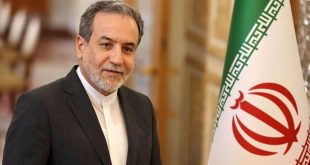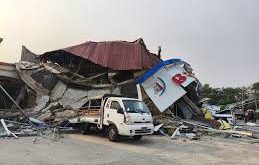South Asia has seen inter-state wars and intra-state violent movements during most of its post colonial history, but its experience with terrorism by non-state actors is relatively recent as compared to other regions such as the Middle East. In the last decades or so, South Asia has, indeed, emerged as the centre – stage of international terrorism, with horrendous implications for countries – India, Pakistan, Afghanistan and Sri Lanka. Within South Asia, Afghanistan and Pakistan alongwith India have been victims of the decade-long wave of non-state terrorism. For the past over thirty years, Afghanistan has seen successive rounds of warfare, with Pakistan bearing the cost of engagement in each such instance. By creating and conflagrating conflict in the region the terrorist organisations rationally hope to keep its three principal nations divided. This fact alone provides enough incentive for Afghanistan, Pakistan and India and the rest of the South Asian states to unite and offer a collective response to terrorism. What may be most significant for all countries of South Asia is a common goal that connects all terrorist organisations: that of creating inter-state conflict or sabotaging cooperative trends among them. Such trends include the peace process between India and Pakistan, which is derailed each time an instance of terrorism occurs, or the recent improvement in Afghanistan – Pakistan relations, which terrorist organisations have spared no opportunity to sabotage. The emergence of terrorism as the most dominating form of conflict – generating activity in South Asia has put in jeopardy the whole regional quest for peace and progress.
The Indian subcontinent or South Asia incompasses today eight very diverse sovereign states of very different sizes: India, Pakistan Bangladesh, Sri Lanka, Nepal, Bhutan, Maldives and Afghanistan. The terms South Asia and India refer, in the first instance, to a vast geographical space stretching from the Himalayan mountain ranges in the north to the Indian Ocean in the south and from the valley of the Indus in the west to the plains of the Brahmaputra in the east. The subcontinent carries the weight not only of its people but also of their ancient history, stretching back five millennia, and a modern history incompassing the experience of British colonialism compressed in tumultuous developments within the past couple of centuries. It has 3 per cent of the world’s area, 23 per cent of its population and 2 per cent of its GDP. Within that, India has 72 per cent of the area, 77 per cent of the population and 75 per cent of the GDP. The geographical boundaries drawn by the highest mountain ranges in the world and encircling seas and oceans set the whole of the subcontinent apart from the rest of the world.
Affected regions
Terrorism has profoundly influenced inter – state relations in South Asia. With the world’s fastest-growing markets, fastest – rising military expenditures and most serious hot sports coupled with a toxic stew of boiling religious, political ethnic, strategic and historical animosities, made all the more volatile by endemic poverty, illiteracy and the sheer agony of daily existence, Asia holds the key to the future international security order. Much of Asia’s terrorist violence is concentrated in its southern belt, which in the past decade emerged as the international hub of terrorism. This southern part of Asia, encompassing Afghanistan, Pakistan, Uzbekistan, Tajikistan, Chinese ruled Xinjiang and Tibet, India, Nepal, Sri Lanka, Bangladesh and Myanmar, is wrecked by terrorist, insurgent, and separatist violence in a manner unmatched elsewhere in the world. The number of annual fatalities in terrorist – related violence in South Asia far exceeds the death toll in the Middle East, the traditional cradle of terrorism. The entire expanse from the Middle East to South East Asia is home to militant groups and troubled by terrorist violence posing a serious challenge to international and regional securily. Developments in several parts of the world are prompting scholars and policy makers to re-examine old theories of terrorism. The terrorist slaying has belied the arguments that, ‘Simply killing a lot of people has seldom been a terrorist objective. Terrorists want a lot of people watching, not a lot of people dead. It, in general, challenges the secular fabric of South Asia.
Multiple approach required
There is no uniform approach applicable to all South Asian countries for dealing with terrorism. What is needed is a differentiated country – specific approach. While in security terms India pursues the objective of zero tolerance to terrorism, in political terms it also believes that all solutions can not be found exclusively through the use of coercive power of the state. Political initiatives have to play a seminal role in complementing the security efforts including exposure of diabolical designs of the terrorists and building a strong civil society support for governmental initiatives. India has kept its doors open for peace initiatives provided the violence was abjured. India’s strategic response includes neutralising collaborative networks of terrorists like gun runners, operators of funding channels, smugglars, organised crime syndicates etc. Intelligence driven capabilities were developed to degrade these networks, most of them having trans-national linkages. In line, Pakistan, being the primary exporter of terror to India, occupied a high priority. Political and diplomatic pressures were exerted to make it abandon use of terrorism as an instrument of its state policy. Political engagements and initiation of confidence building measures did help but not to the desired extent.
With the fast radicalisation of Afghanistan Pakistan and Bangladesh on one hand and erosion in the will and capability of the governments in power there the overall security scenario in the region stands highly vitiated. Taliban’s ground entrenchment; recruitment of new cadres, battle preparedness and increase in drug linked financial resources are a cause of concern. From this perspective, South Asian countries of Afghanistan, Pakistan, Bangladesh and India have a special import both academic and empirical; the first three where the virus multiplied most prolifically and the last where it struck most lethally. Largest number of Muslims have fought and died in the name of Jihad from this region in last quarter of a century. Together, this region has one third of the world’s Muslim population and has over 200 Islamic extremist groups and Jihadi organisations of various brands and sizes. Most of the Islamic terrorists who struck in different parts of the world have had some link or the other with this region. All the three states where Islamic radicals received state or civil society support are politically unstable, burdened with no or weak democracies, traped in slow economic and social growth and seen as near failing states. More importantly, though theocratic Muslim majority states, they themselves are facing vicious sectarian terrorism.
Turning point of 11 September
Especially after 11 September 2001 the situation in Bangladesh has fastly deteriorated than is normally understood. When Pakistan and Afghanistan came under pressure, a good number of terrorists, reportedly with Pak intelligence support, found Bangladesh as safe haven. Using Islamic card for political gains the Bangladeshi society stands highly radicalised – most local groups working on the franchise of Pak-Afghan terrorist outfits including Al – Qaeda. Because of its social and cultural homogeneity, there is a larger margin of safety in Bangladesh with regard to all the forms of terrorism prevailing there. The collective strength of terrorist groups like Hakat-ul-Jihad Islami, Harkat-ul-Ansar, Okaye Jote etc. now is estimated in several thousands. While India is the principal target, the anti-US and anti-West outbursts are to shrill to be ignored. On terrorist front, India is living in an unenviable neighbourhood. Islamic terrorism in India is essentially of an imported variety.
In recent months a more promising trend is the start of the reconciliation process with Afghanistan in the lead and Pakistan and some other countries offering due assistance for the purpose. The reconciliation process in Afghanistan provided an opportunity for the forces of Afghan insurgency, especially Taliban, battered by long war to compromise on the pre – conditions for peace, including renunciation of violence, dissociation of links with Al-Qaeda and acceptance of Afghanistan’s new constitutional and political reality. For Afghanistan’s majority population, the pashtun, who primarily constitute the insurgents, overcoming post-Taliban marginalisation in the country’s security, political and economic structure should be an important incentive to make peace. There was a counterinsurgency campaign launched in Afghanistan, which besides going after Al-Qaeda and Taliban operatives includes a broad plan to try to improve governance in Afghanistan, fight corruption, train the Afghan Army, wean farmers off the cultivation of poppies, promote women’s rights and protect local population centres. With Al-Qaeda losing relevance in Afghan insurgency and its leader osama bin Laden dead, the justification for military engagement of foreign forces in Afghanistan has significantly eroded.
Need of the hour
There is now a broad consensus in the international community that direct actions to combat terrorism cannot be postponed until its root causes are eliminated. Therefore, combating terrorism should proceed side by side with actions designed to prevent it. However, counterterrorism by itself can become a problem. First, given the nature of the modern technology of using violence against terrorists and the closely-knit character of modern economies, the collateral damage caused can only be really staggering. Every effort should, therefore, be made to minimise, if not avert, it. Besides, international arrangements should be put in place to pay due compensation to non-combatant nations and individuals. Second, counterterrorism creates vested interests in the perpetration of terrorism, particularly when it serves domestic political purpose. Finally, it is very difficult to take effective counter-terrorist measures in the polarised societies of South Asia. There are formidable obstacles to revamping the law and order machinery in a divided society. In these conditions, dealing with the root causes of terrorism may become the pre-condition for ensuring the effectiveness of counter-terrorist measures. Economically developed, politically stable and conflict-free South Asia is conducive not only for the members of the region but can be an asset for the international community and sure guarantee for international peace and security.
Writer:
Rajkumar Singh
Professor and Head
P.G.Dept. of Pol.Sc.
BNMU, West Campus, Saharsa
Bihar, India.
 Afghanistan Times
Afghanistan Times




